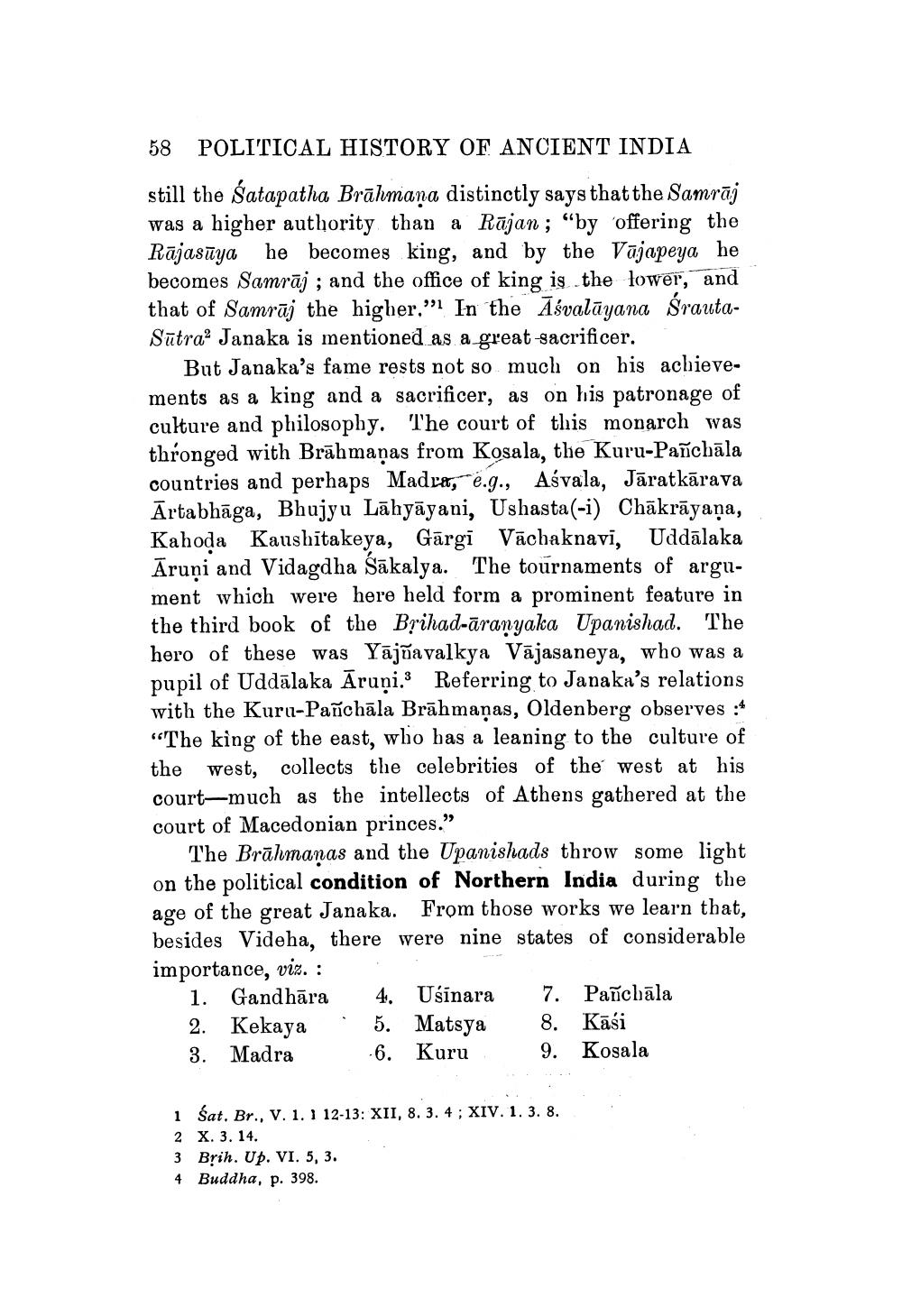________________
58 POLITICAL HISTORY OF ANCIENT INDIA still the satapatha Brāhmana distinctly says that the Samrāj was a higher authority than a Rājan ; "by offering the Rājasnya he becomes king, and by the Vajapeya he becomes Samrāj ; and the office of king is the lower, and that of Samrāj the higher,"ol. In the Āśvalāyana SrautaSūtra’ Janaka is mentioned as a great sacrificer.
But Janaka's fame rests not so much on his achievements as a king and a sacrificer, as on his patronage of culture and philosophy. The court of this monarch was thronged with Brāhmaṇas from Kosala, the Kuru-Pañchāla countries and perhaps Madro, e.g., Aśvala, Jāratkārava Ārtabhāga, Bhujyu Lāhyāyani, Ushasta(-i) Chākrāyaṇa, Kahoda Kaushītakeya, Gārgi Vācbaknavi, Uddālaka Āruņi and Vidagdha Śākalya. The tournaments of argument which were here held form a prominent feature in the third book of the Brihad-āranyaka Upanishad. The hero of these was Yājõavalkya Vājasaneya, who was a pupil of Uddālaka Āruņi. Referring to Janaka's relations with the Kuru-Pañchāla Brāhmaṇas, Oldenberg observes :* "The king of the east, who has a leaning to the culture of the west, collects the celebrities of the west at his court-much as the intellects of Athens gathered at the court of Macedonian princes.”
The Brāhmanas and the Upanishads throw some light on the political condition of Northern India during the age of the great Janaka. From those works we learn that, besides Videha, there were nine states of considerable importance, viz. : .
1. Gandhāra 4. Usinara 7. Pañchāla 2. Kekaya . 5. Matsya 8. Kāśi 3. Madra 6. Kuru 9. Kosala
1 Šat. Br., V. 1. 1 12-13: XII, 8. 3. 4 ; XIV. 1. 3. 8. 2 X. 3. 14. 3 Brih. Up. VI. 5, 3. 4 Buddha, p. 398.




